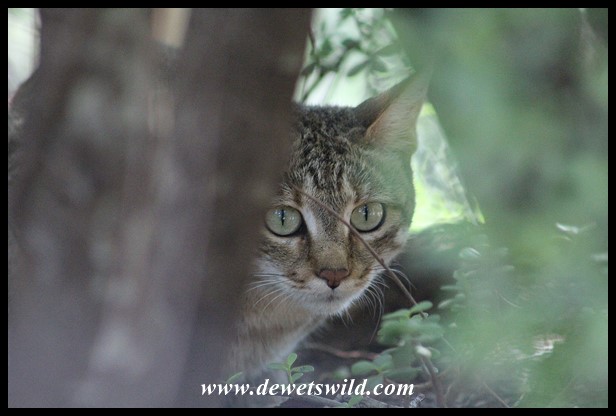Felis lybica cafra
The African Wild Cat is probably our most numerous small felid, occurring in every corner of South Africa and widely into the rest of the continent. They occur in any habitat that offers shelter and prey, which mainly includes rodents and other small mammals (up to the size of hares), birds, reptiles, frogs and invertebrates. They are independent of drinking water.
African Wild Cats are nocturnal and solitary by nature, except when mating or when a female is accompanied by her young. Both sexes defend territories, with those of males much larger and encompassing the areas of three or more females. Wild Cats are excellent climbers, though they do most of their hunting on the ground. Females give birth to litters of 1-5 kittens at any time of year, using burrows, holes in trees or crevices in rocks as dens. The kittens become independent when they’re around 5 to 6 months old, and have a life expectancy of up to 20 years.
Distinguishable from domestic tabbies by their relatively longer legs, shorter tails and rufous backs of the ears, the African Wild Cat stands about 35cm high at the shoulder and weigh around 4.5kg. It is estimated that African Wild Cats were first tamed about 10,000 years ago and is the direct ancestor to the our present day domestic cats. So closely related are they that hybridization with domestic cats is the single biggest threat to the continued survival of the pure African Wild Cat. The IUCN considers the African Wild Cat to be a subspecies of the European Wild Cat (Felis silvestris), a species it lists as being of least concern throughout its wide distribution.

African Wild Cat visiting our campsite in Satara

African wildcat seen on a night drive from Lower Sabie

African Wild Cat in Satara

African Wild Cat

African Wild Cat

African Wild Cat in Satara

African Wild Cat seen on a night drive from Satara

African Wild Cat

African Wild Cat

African Wild Cat

African Wild Cat

Satara’s not-so-wild African Wild Cat

African Wild Cat

African Wild Cat

African Wild Cat

African Wild Cat



























